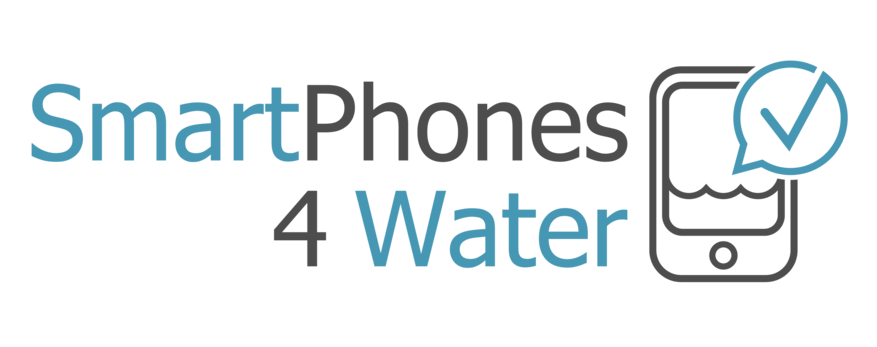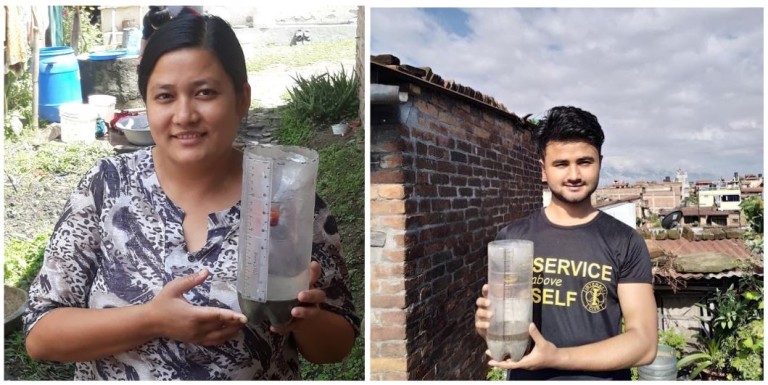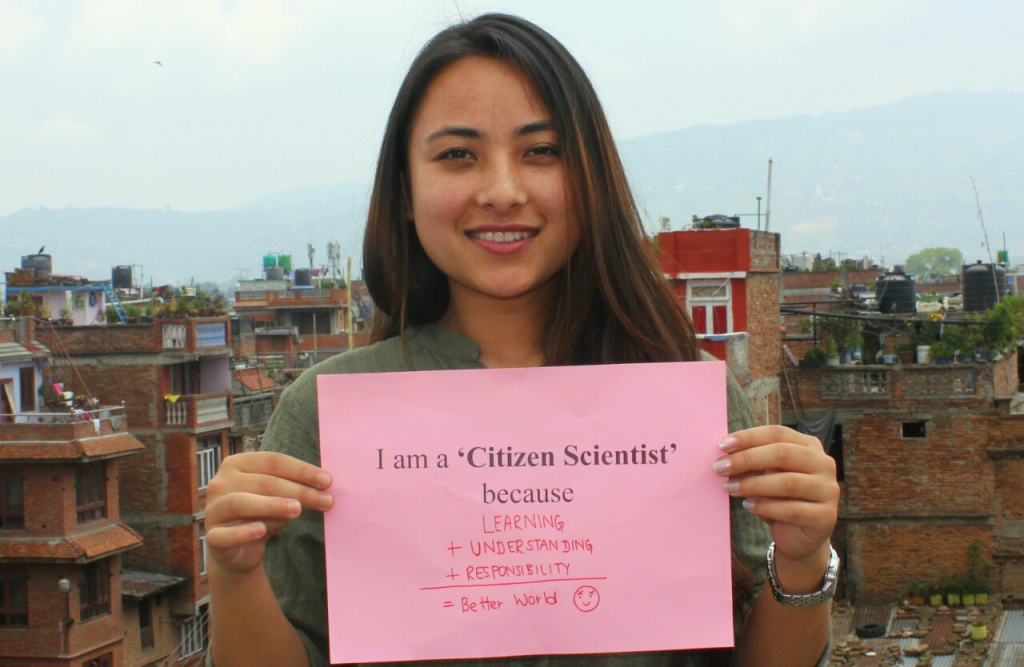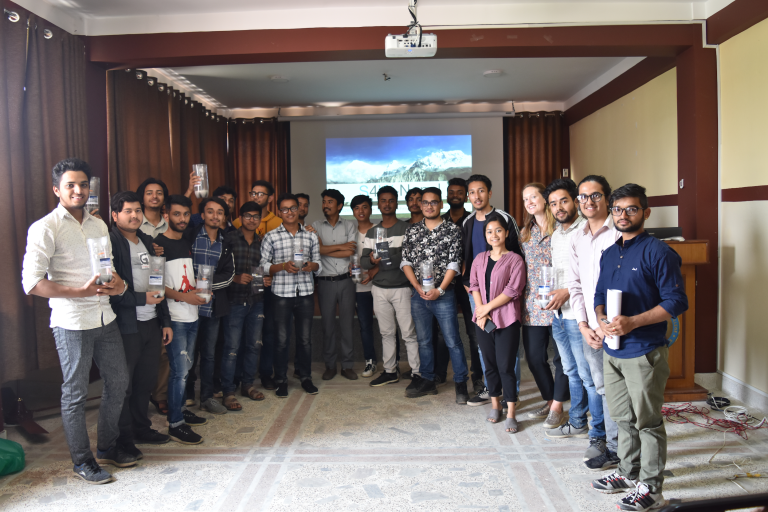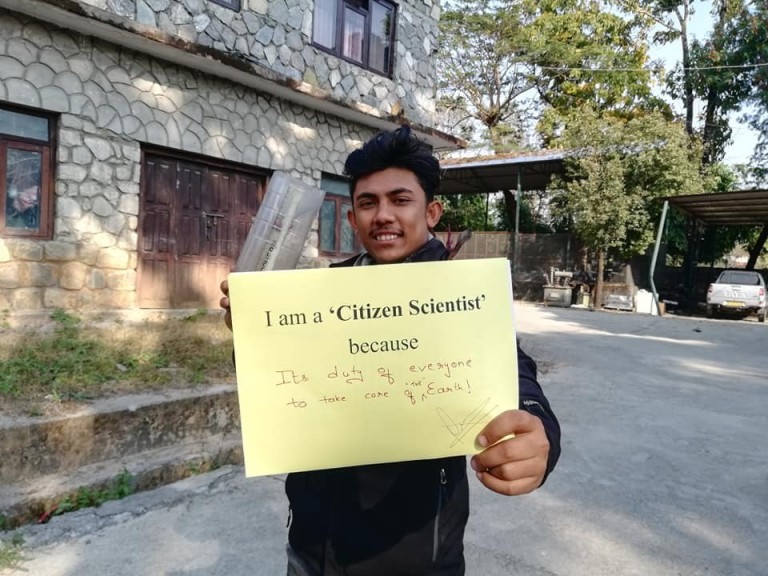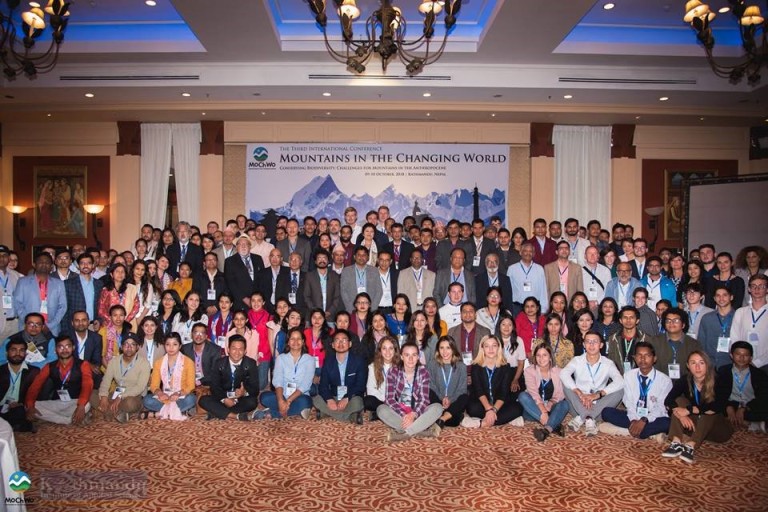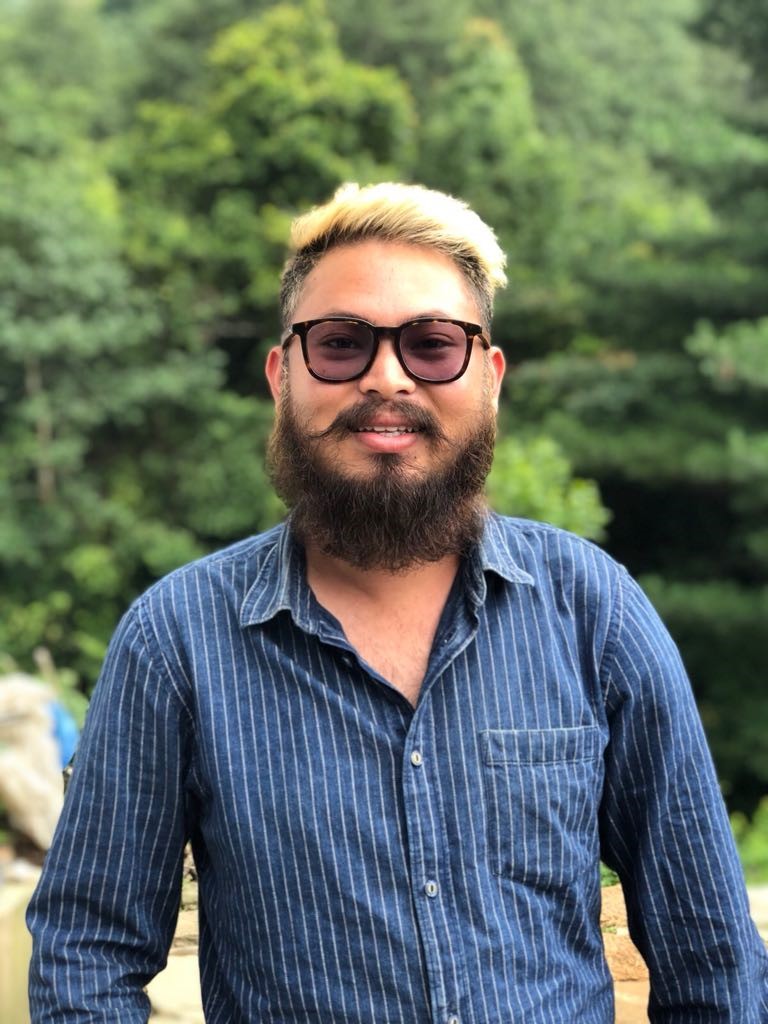Blog
Recruiting Volunteers for 2020 Monsoon Expedition!
S4W-Nepal is currently recruiting citizen scientists to help them collect precipitation data across Nepal as part of the 2020 monsoon expedition! Participants are asked to collect daily precipitation data during the 2020 monsoon season from June through September! Everything you need to know to participate is included on the poster below, and you can continue reading to find answers to the four questions below:
What is S4W-Nepal’s monsoon expedition?
Why are we doing it?
How will we do it? (i.e. What is our approach?)
Who is (or can be) part of this expedition?
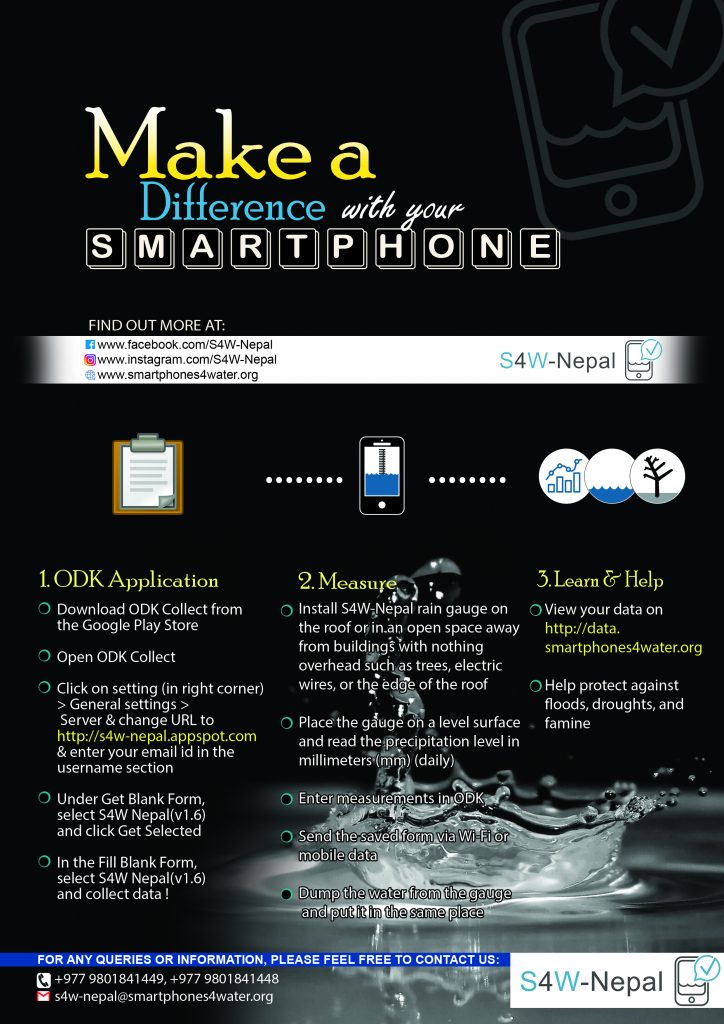
What?
What is S4W-Nepal’s monsoon expedition?
S4W-Nepal’s main objective is to generate good spatio-temporal hydro-meteorological data (e.g. when and where is water moving, how much, and of what quality); these data are necessary to support wise water management decisions. We’ve been doing this for a few years already. During the 2017 and 2018 monsoon, we engaged with over 100 local citizen scientists to measure rainfall in the Kathmandu Valley of Nepal. We attempted to recruit as many citizen scientists as possible and collect as much data as possible. In 2019, we shifted our focus towards data quality rather than quantity. In order to compare the reliability of our data with a standard DHM gauge used to measure precipitation, we placed our stations in places nearby the DHM stations in the Valley.
With the same enthusiasm as in the past, S4W-Nepal has launched the Monsoon Expedition 2020 with a slogan “COUNT THE DROPS, BEFORE IT STOPS!”. Through this campaign, we aim to generate consistent, accurate rainfall data and provide the gathered information to all interested stakeholders. In 2020, we are aiming to expand by spreading out of the Kathmandu Valley and characterize the spatial and temporal variability in rainfall patterns for all of Nepal, with a special focus on Kathmandu, Pokhara, Hetauda, Dharan, Biratnagar, and Chitwan. If you live in Nepal, we hope you’ll consider participating.
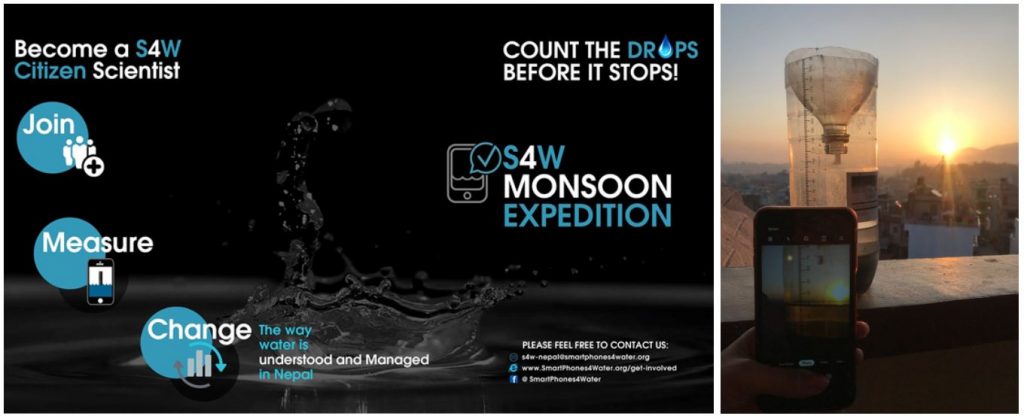
Why?
Why are we doing it?
Rainfall is an important part of the hydrologic cycle. Precipitation is the source of all of the water that we, as people, and our natural environment and ecosystems need to survive and thrive. Increasing water demand, haphazard urbanization, and poor characterization of the rainfall patterns have hindered effective planning and management practices related to water. Hence, in this regard, what the Kathmandu Valley and other areas of Nepal need most right now is an effective way to characterize these problems and spread the word to the appropriate stakeholders. We need data!
How?
How will we do it?
For data generation, S4W-Nepal leverages the power of young researchers, citizen science, and mobile technology. We use an Android smartphone application called Open Data Kit (ODK) Collect to measure precipitation with the help of citizen scientists. Advances in mobile technology through increased GPS accuracy and high-resolution cameras have undoubtedly improved the accuracy and reliability of citizen scientists’ observations. For measuring precipitation, S4W-Nepal uses a local rain gauge constructed of readily available repurposed materials costing less than a dollar and we provide it to citizen scientists for free. This approach is both lower in cost and more rapidly scalable than other traditional methods of measuring precipitation. If you’re wondering how accurate these rain gauges are, we were curious too and completed a peer-reviewed study you can find here.

Who?
Who is (or can be) part of this expedition?
Citizen Scientists! Anyone with an interest in participating, collecting data, learning about their local water resources, and building connections with other like-minded individuals!
It only takes a few minutes each day to record and send in your observations of precipitation and maintain your rain gauge 🙂
Including and involving local citizens in scientific research has the benefit of building the capacity of communities to understand and manage their own water resources, which in turn strengthens their connectedness to place. A deeper connection to the places we call home and to the natural environment and resources, such as water, that we depend on, is something all of us around the world can beneift from. There are no degree or achievement requirements for becoming a citizen scientist; everyone can be one. It is solely driven by personal interest, and we hope you’ll join us!
Contact information for those interested can be found on the poster above 🙂
Recruiting Volunteers for 2020 Monsoon Expedition! Read More »
Sustainable Water Resource Management (Kantipur Engineering College 2019 Conference Review)
Posted on October 5, 2019
Here’s an update and reflection from S4W-Nepal staff from a recent conference where they had the opportunity to present on some recent data collection and research efforts they are engaged in. Keep a look out for additional information about some of this exciting and important work soon 🙂
The Kantipur Engineering College (KEC) hosted its ‘2nd International Conference on Engineering and Technology’ on September 26, 2019. The main objective of the conference was to enhance the research ability of undergraduate/graduate students and young researchers. The conference incorporated a broad range of engineering disciplines, including information and technology, civil, computer, electrical, and mechanical engineering. Each discipline was covered in special sessions and symposiums.
Smartphones4Water Nepal (S4W-Nepal) organized a symposium entitled ‘Sustainable Water Resource Management.’ The symposium included six technical presentations and one special presentation. Three of the presentations were from research that S4W-Nepal initiated in the Kathmandu Valley; the topics were calculation of drinking water quality index of the Bhaktapur Municipality, groundwater level variability, and the status of stone spouts. The other informative presentations covered water-induced disaster management, sustainable urban drainage systems, and water security. The special presentation was by some of our colleagues from TU Delft titled ‘Academic life at TU Delft and their research in the Kathmandu Valley.’
Overall, the conference was a wonderful platform to share our ideas, research findings, and the use of the citizen science approach with national and international participants, visitors, and guests from diverse backgrounds. All of us from S4W-Nepal were honored to be a part of the conference and were overwhelmed by the opportunity to present the research works that we, including our citizen scientists, have invested a lot of effort in. We look forward to future opportunities and platforms like this which will help us continue to enhance our research ability, presentation, and communication skills.
Citizen Science for a Sustainable Mountain Future – MoChWo Symposium Review
As we approach the end of the year, we are looking forward and vision-casting for 2019. However, oftentimes we plan for the future and look ahead by first looking backwards at experiences we’ve had and lessons we’ve learned. As we plan for 2019, we are also reflecting on 2018 and thinking through the experiences that have helped shape us and prepare us for what is to come in the New Year.
In light of this, we have a reflection from Smartphones4Water-Nepal (S4W-Nepal) staff on a conference held in Kathmandu this past October, which was sponsored by SmartPhones4Water. We hope you enjoy it!
The Kathmandu Institute of Applied Science organized its third conference on ‘Mountains in the Changing World’ (MoChWo) on the 9th and 10th of October 2018 at the Radisson Hotel in Kathmandu. It is an annual event that provides a forum for national/international scholars, researchers, policy makers and students to share research findings and exchange ideas and knowledge covering various aspects of mountain ecosystems. The conference covered broad range of thematic areas such as Disasters: resilience, and adaptation; Biodiversity conservation; Climate change; Environmental pollution; Forest management; Soil, water and atmospheric research; Agriculture and agro-ecology; Sustainable livelihood; and Policies for mountain resources and livelihood. These areas were covered through different symposia, technical sessions and poster presentation sessions. A group photo of MoChWo conference participants can be seen below Figure 1.
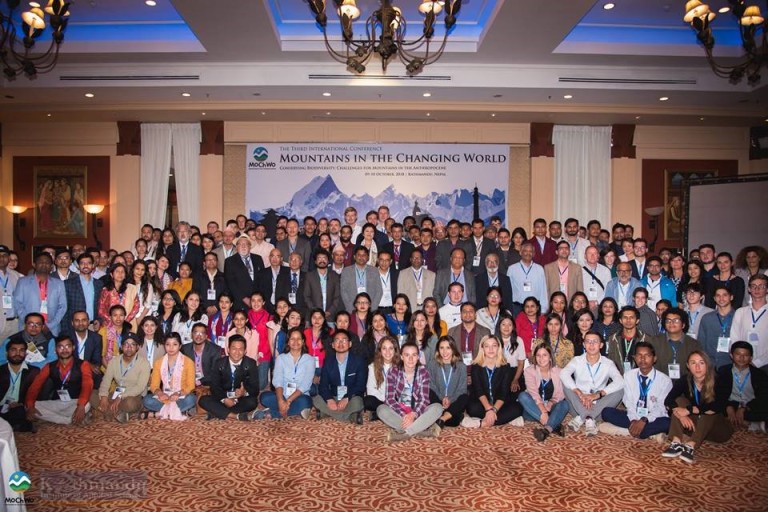
S4W-Nepal organized a symposium titled ‘Citizen Science for a Sustainable Mountain Future.’ Two of the advisors of S4W-Nepal, Dr. Ram Devi Tachamo Shah (Technical Advisor, Himalayan Biodiversity and Climate Center (HimBioCliC)) and Dr. Bhesh Raj Thapa (Researcher-Irrigation Engineer, International Water Management Institute (IWMI) – Nepal), chaired the first and second sessions, respectively. The invited speaker for the first session, Dr. Anjana Shakya (Capacity Building and Higher Education Specialist at PAANI Project and Kathmandu University Visiting Faculty, Environment Education and Sustainable Development), gave a presentation titled“Engaging youth for integrated water resource management in Nepal.” For the second session, Mendel Wong (Co-Founder, Co-Chair and Platform Director of Citizen Science Asia, Hong Kong) gave a talk titled “Building Citizen Science Asia: Community Partnerships and SDGs.” Besides these two presentations, there were 5 other oral presentations and five poster presentations covering citizen science concepts. One of the oral presentations was from some of our colleagues from TU Delft titled “Streams, sewage and shallow groundwater: water quantity and quality interaction in the Kathmandu Valley.” The symposium highlighted the importance of involving citizen scientists in the research field in order to provide researchers with access to a broader array of data, . Participants in the symposium were responsive to the new and cost effective methods of data collection presented and discussed. A photo of S4W-Nepal staff and their TU Delft colleagues taken during the symposium can be seen in Figure 2 below.
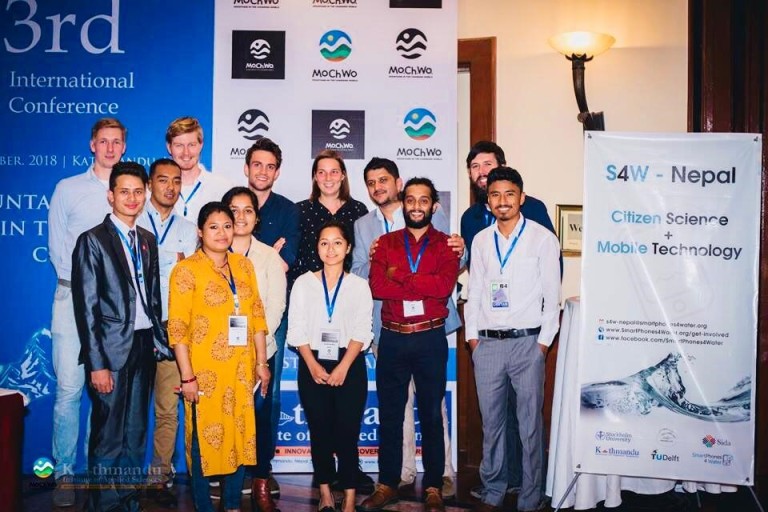
S4W-Nepal provided scholarships to attend the conference to ten qualified candidates based on their research abstracts. Similarly, an award evaluation committee evaluated both the oral presentations and posters presented by students and chose the best four to receive awards. Ms. Surabhi Upadhyay, one of our S4W-Nepal staff members and co-author of this article, won the best undergraduate poster presentation award (Figure 3). Her poster presented research on the importance of involving citizen scientists in generating reliable observations of land use in the Kathmandu Valley.
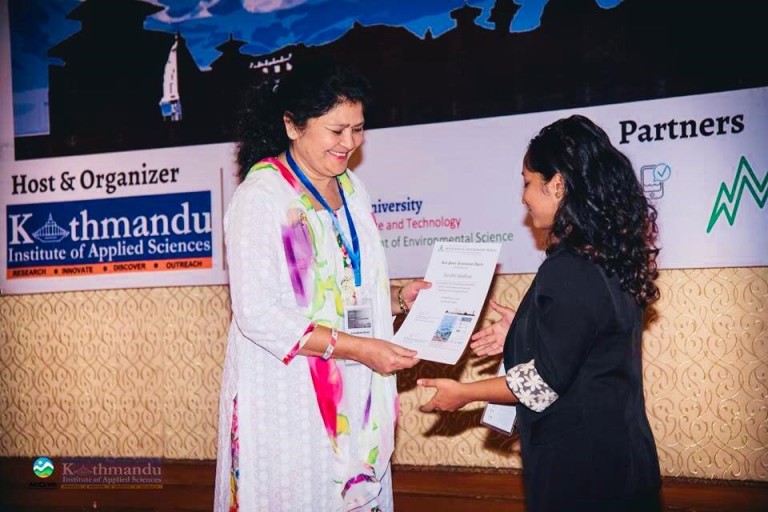
Overall, the two-day conference was a wonderful platform to share ideas, research findings and projects with people from diverse environmental backgrounds from all across the world. All of us from S4W-Nepal were honored to be a part of the conference and were overwhelmed by the opportunity to share our research work that we’ve invested so much in. We look forward to opportunities in the new year to continue conversations about the importance of science in our world, and we hope to find new platforms and opportunities to share this with others. Thank you for your interest in our work!
By Surabhi Upadhyay and Amber Bahadur Thapa
Post-Script:
We also have a similar reflection on the MoChWo conference from 2017 available here. You can learn more about SmartPhones4Water on our website or by watching a video about our work in Nepal here.
If you’d like to support our work, you can donate used phones and money. 100% of all donations will go directly to supporting ongoing work in Nepal.
Citizen Science for a Sustainable Mountain Future – MoChWo Symposium Review Read More »
Meet Sanjog Lama
Posted on September 24, 2018
Q: What is your name? A: My name is Sanjog Lama.
Q: How old are you? A: I’m 21 years old.
Q: Where were you born? A: I was born in Thankot, Panighat.
Interviewer’s Note: Thankot is a large village to the west of the Kathmandu District in the Bagmati Zone in central Nepal. It lies at the base of Chandragiri Hill, which is a popular tourist destination. A cable car can be taken from Thankot to the top of Chandragiri Hill for excellent views of the surrounding mountains. Thankot is also one of the main entrances into the Kathmandu Valley and the capital from rest of the country, so there are a lot of people traveling to and from Kathmandu that will pass through Thankot.
Q: Where do you live in the Kathmandu Valley? A: I still live in Thankot, Panighat, where I was born.
Q: Can you walk us through a typical day of life? What are the activities you’re doing? A: I have a clothing shop, and I typically spend my days managing the shop and selling clothes.
Q: Can you tell us a little bit about your family (Spouse, Children, Brothers, Sisters, Cousins, etc.)? A: There are 4 members in my family (my father and mother and me and my sister), but currently only three of us live together since my sister got married and lives with her husband. I am the younger child in the family, and my sister is the older.
Q: What is (or was) your favorite subject in school? A: English.
Q: Can you tell us about a favorite memory of yours? A: I do not have that many favorite moments yet, but I really enjoy spending time with friends.
Q: How did you hear about the S4W-Nepal project? A: S4W-Nepal was doing a survey in my area and one of the members of S4W-Nepal team explained to me the concept of citizen scientists collecting precipitation data with smartphones. It caught my interest, and I was intrigued by how I could help in collecting water-related data with just a few clicks and swipes.
Q: What has been your experience as a citizen scientist with S4W so far? A: I am very happy that I am helping S4W-Nepal with precipitation data. Through S4W-Nepal I now know how a regular coke bottle, a little concrete and a ruler can make a difference in data collection.
Interviewer’s Note: You can learn more about how we are able to use smartphones and readily available local materials to collect precipitation data in one of our older stories here. Also, a sneak preview of upcoming events, but we’re working on publishing some of this citizen science-driven precipitation data collection in an upcoming journal. Hopefully we’ll be able to share about that soon!
Sanjog is playing a critical role in S4W-Nepal as a citizen scientist. Each day, Sanjog uses an Android application called Open Data Kit (ODK) to record rainfall collected by an inexpensive locally made rain gauge (each costs about $1.50). Sanjog is motivated to participate in the project because he feels a sense of responsibility to know about the water resources of the valley, and because each observation he makes earns her an extra 25 rupees (roughly $0.25).
S4W-Nepal is a collaboration between S4W, Himalayan Bio-Diversity and Climate Change Center (HimBioCliCC), Kathmandu Institute of Applied Sciences (KIAS), Delft University of Technology, the Swedish International Development Agency, and Stockholm University. Water is our most precious resource. Lord Kelvin, a famous Scottish mathematician, once said, “you can’t manage a resource you don’t measure.” S4W-Nepal’s goal is to generate the data necessary to support wise water management decisions. S4W aims to accomplish this with a three pronged approach of Research, Education, and Employment. This project in the Kathmandu Valley is our first project.
